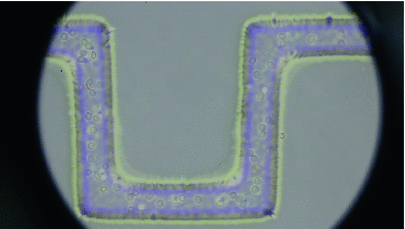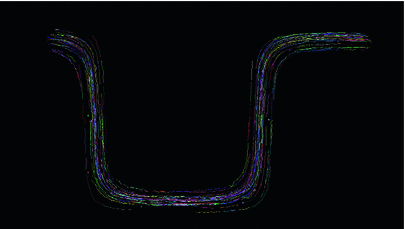Simulation of microfluidic devices is a great tool for optimizing these devices. For the development of simulation models, it is necessary to ensure a sufficient degree of simulation accuracy. Accuracy is ensured by measuring appropriate values that tell us about the course of the simulation and can also be measured in a real experiment. Measured values will simplify the real situation so that we can develop the model for a specific purpose and measure the values that are relevant to the research.
We acquire the detection data through different methods. First method is using Hough transform, which detects circles and ellipses to which red blood cells correspond in the video. Second method uses the machine learning algorithm AdaBoost, which was specifically trained on a dataset of red blood cells. Third method utilizes neural networks, that detect red blood cells in videos. All of these methods provide output for the next step: Tracking.
Tracking of cells takes the output of the detection step, i.e. bounding boxes of detected red blood cells, and connects them together into tracks. The algorithm is capable of responding to some missing detections, and is able to predict where the tracked cell should be in the next frame. These tracks can then be used to acquire physical data, which is usable for model validation.


More info:
- H. Bachraty, K. Bachrata, M. Chovanec, F. Kajanek, M. Smieskova, M. Slavik: Simulation of blood flow in microfluidic devices for analysing of video from real experiments, Bioinformatics and Biomedical Engineering, Springer International Publishing, pp. 279-289, 2018